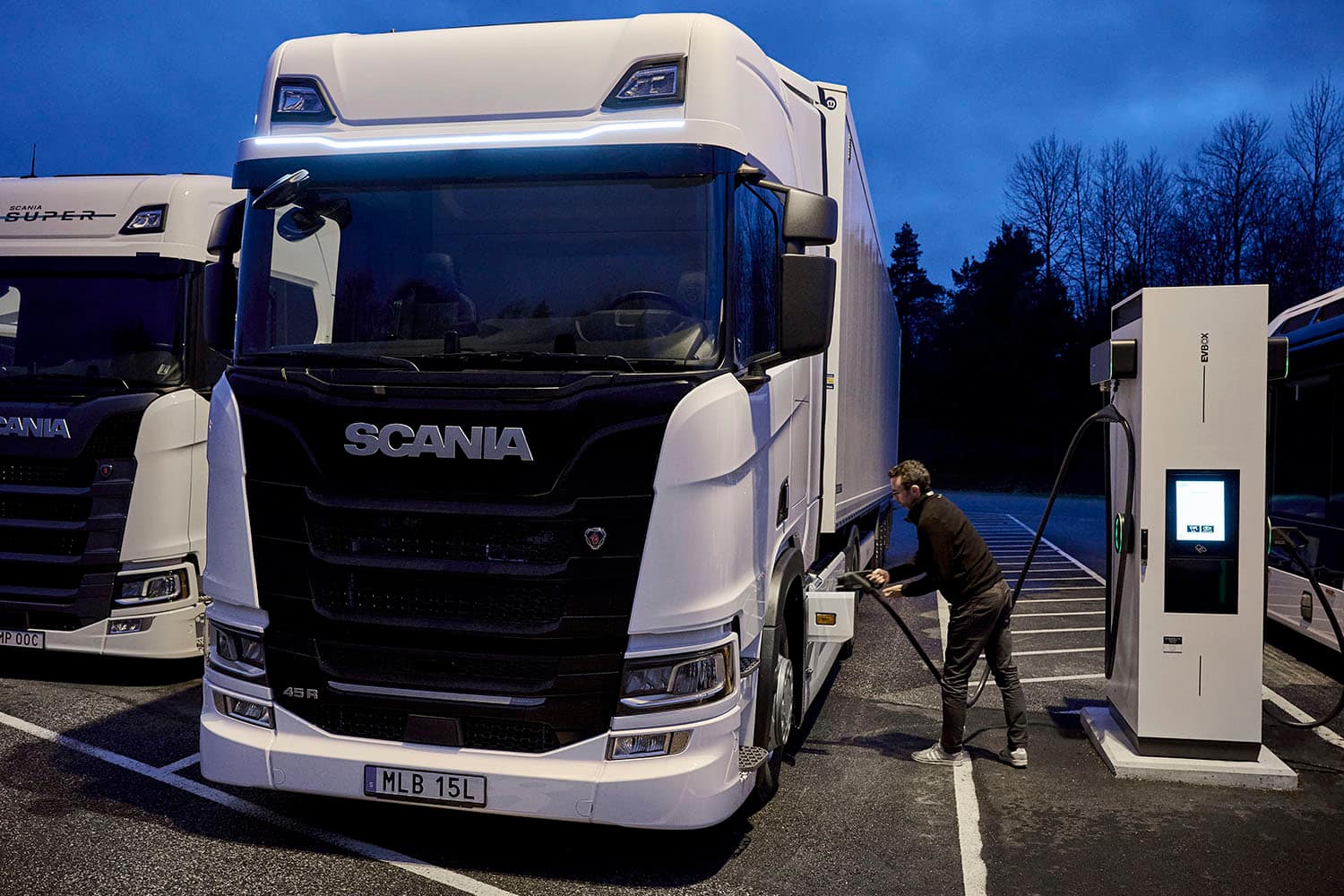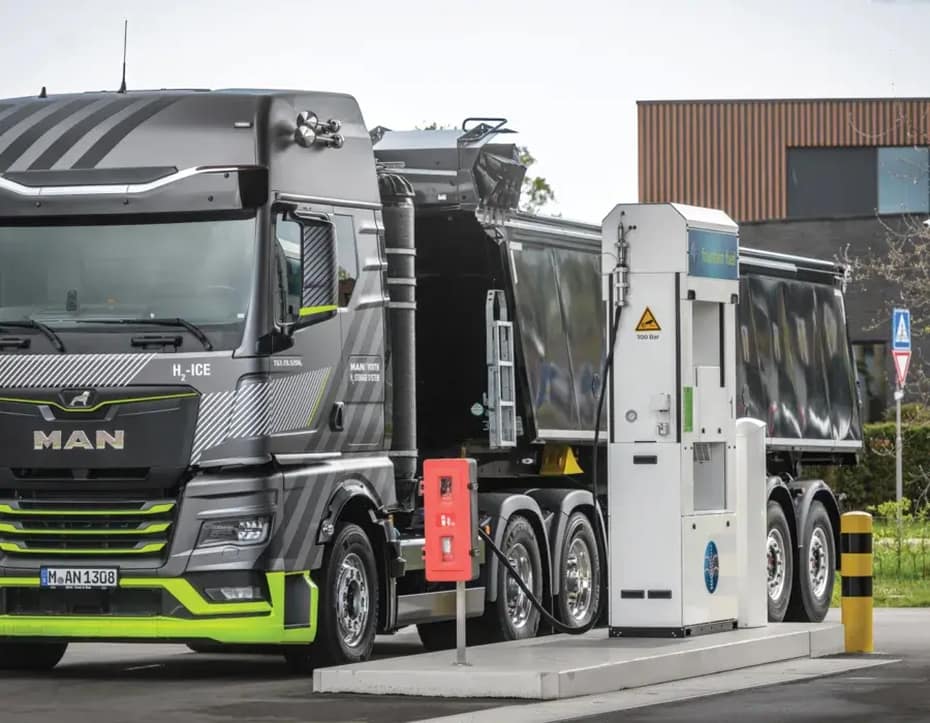
Electric HGV operational challenges persist even as Moto, Milence and others build hubs — fleets must plan for range, charging-time productivity, payload penalties, weather impacts, maintenance skills, depot safety, and driver training.
Even with sufficient charging hubs provided by operators like Moto and Milence, the transition to electric Heavy Goods Vehicles (HGVs) presents significant operational challenges for fleet managers and logistics companies. While the charging infrastructure gap may eventually be bridged, numerous operational considerations remain that will fundamentally reshape how freight transport operates.
1. Range Limitations and Operational Planning
Despite advances in battery technology, the range of electric HGVs remains substantially lower than their diesel counterparts, creating significant operational challenges. Current electric trucks have a maximum range of approximately 300 miles per charge, compared to diesel trucks that can travel up to 1,000 miles on a single tank of fuel (Safety Shield Global). This limitation necessitates fundamental changes to route planning and operational schedules.
For long-haul operations, manufacturers like Scania report that their electric trucks configured for long-distance haulage can achieve a maximum range of about 360 kilometers (≈224 miles) during four-and-a-half hours of driving at 80 km/h (Scania). This falls significantly short of what many logistics operations currently demand from diesel vehicles, requiring either more frequent stops or alternative routing.
Fleet operators must reconfigure longstanding delivery schedules to accommodate these range constraints. The battery capacity needed varies based on operation type: city distribution with frequent stops and lower payloads (10–12 tonnes) can use smaller packs, while long-haul distribution (~24 tonnes) demands larger configurations, affecting weight and payload capacity. Supply-chain teams must also reassess their logistics networks, establishing regional hubs to shorten routes and factoring load-dependent energy draw into scheduling (IOSCM).
2. Charging Time Requirements and Productivity Impacts
Even with abundant charging infrastructure, recharge time remains one of the most critical electric HGV operational challenges. Fully charging an electric HGV can take 8–12 hours with standard depot chargers, versus minutes for refuelling diesel vehicles. This directly affects vehicle utilisation and schedule reliability.
Depot-based charging typically requires chargers ≥150 kW. Even at 250 kW DC, a full charge still takes around 2 hours (Transport Scotland). High-frequency operations therefore face bottlenecks or must expand fleets to maintain service levels.
En-route charging for long-haul operations is even harder. Passenger-vehicle chargers lack the output required by HGVs. While 30-minute fast-charge targets are being tested (DHL Freight), real-world availability remains limited. Fleet managers in the Battery Electric Truck Trial (BETT) found that “charging speed in some depots was slower than expected and prevented drivers from sufficiently charging during lunch breaks” (BETT Report).
3. Payload Capacity Constraints
The additional weight of battery systems reduces payload — a major constraint for weight-critical logistics. Without regulatory allowances, 2024 long-haul battery-electric HGVs carry about 2 tonnes less than diesel equivalents (Transport & Environment).
Two-thirds of Britain’s 44-tonne HGVs are volume-limited and unaffected, but 10% “weigh out” and would lose 5–8% of tonne-kilometres carried. UK regulations now allow a flat +2-tonne increase for zero-emission vehicles (UK Gov consultation), helping offset the payload penalty.
4. Weather and Temperature Impacts
Electric HGV operations are significantly affected by cold weather, which reduces both vehicle performance and cab heating. In the BETT trial, managers noted “spikes in energy use from heaters reducing range” and “technical issues during colder months” (BETT Report). Reliability and comfort fall in low temperatures, requiring larger route buffers and sometimes diesel-EV mixed fleets for winter resilience.
5. Maintenance and Technical Support
Electric HGVs require less routine servicing due to fewer moving parts (Rizon Trucks), but downtime may rise because of limited high-voltage-trained engineers. BETT data showed vehicles “off the road for months” due to technical faults and scarce qualified staff (BETT Maintenance Guidance). Upskilling and BEV safety training are now critical investments.
6. Safety Considerations and Depot Design
Large lithium-ion batteries introduce new safety risks. Fire-risk investigations highlight that eHGV incidents could be “more severe” due to pack size (Fleet News). Recommended mitigations include expanded spacing, isolation bays, improved detection, and physical barriers to prevent total-site loss.
7. Driver Experience and Training
Transitioning drivers to electric HGVs requires new skills in range management, regenerative braking, and acoustic awareness. BETT fleets requested “more EV-specific training” and cited “range anxiety from unclear state-of-charge gauges,” leading some to allocate diesel vehicles to longer routes even when eHGV range was adequate (BETT Report).
Conclusion
Electric HGV operational challenges reach beyond charging. They influence planning, productivity, payload, maintenance, safety, and workforce capability. Forward-thinking operators are piloting electric trucks on specific routes, aligning infrastructure investment with procurement and training. Those who underestimate the impact risk swapping tailpipe emissions for logistical bottlenecks.
Related reading:
Green Steel & CBAM ·
Hydrogen Vehicles in Europe ·
Hydrogen Storage
Full Source List (33 References)
[1] Fleet News – eHGV battery fire risks
[2] Freightera – Electric freight truck challenges
[3] Rizon Trucks – EV maintenance vs diesel
[4] T&E – HGVs on the road to net zero (PDF)
[5] Cenex BETT Final Report (PDF)
[6] T&E – BEHGV charging report (PDF)
[7] Infinity Container Logistics – Are electric HGVs the future?
[8] Scania – Range and payload
[9] Cenex – BETT Maintenance Guidance
[10] Freight Carbon Zero – Charging infrastructure challenges
[11] Safety Shield Global – Advantages & disadvantages
[12] IoSCM – EV impact on supply chains
[13] DHL Freight – Charging times goal
[14] Transport Scotland – Energy Infrastructure (PDF)
[15] Fleet News – BETT key takeaways
[16] Drax Energy Solutions – HGV electrification challenges
[17] Renault Trucks – Electric maintenance guide
[18] UK Power Networks – HGV electrification
[19] Cenex – BETT End-of-trial report (PDF)
[20] Electric Car Guide – Electric HGV Guide 2025
[21] Your Travis – EU truck impact
[22] Dalroad – Truck electrification challenges
[23] Sopp & Sopp – Pros & cons for fleets
[24] Timocom – Electric lorry benefits
[25] ATA – Heavy-duty truck mandates reality
[26] ORNL – Medium- and Heavy-Duty Vehicle Electrification (PDF)
[27] EV Network – Future of HGV charging
[28] Fleet News – Range & payload slow van electrification
[29]

